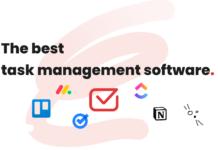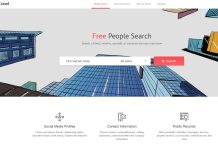
Many agencies are looking to scale their business. Thanks to their high-quality services, they continue to attract new clients. While growth is generally a good thing, it can also complicate things.
Agencies looking to grow should take all necessary measures to ensure that all parties remain happy. The internal team shouldn’t face any trouble keeping up with the workload; the clients need to receive their work on time.
To accomplish this, it’s important to think about the agency client onboarding process. What can you do to make it easy for existing and new clients to purchase your services? Here are a few easy to follow tips.
1. Build a knowledge base
It can’t be stressed enough how important it is to build an internal knowledge base for your team. No, a Google document doesn’t count. It’s not easily searchable and complicates knowledge sharing instead of making it easier.
There are many tools you can use, such as Notion, Outline, or even a custom WordPress theme. Ideally, the software you opt for can be used both internally, but also has a sharing function. Manage the entire knowledge in one tool, decide what to share with your team, and what to make publicly available for clients.
Some knowledge base tools also allow you to connect other apps to them. For instance, if your team spends their day mostly in Slack, you can search your Outline knowledge base without leaving the app.
2. Optimize your pricing page
Are you attracting so-called bad clients? There might be a good reason for it. Many agencies think that luck isn’t on their side, but in reality, they open themselves up to be exploited.
Think of it this way: if your services and pricing page is very vague, there’s a lot of room for interpretation. Analyze your offering, and try to make it clear to prospects what they receive for your price and what deliverables they can expect. Also, link to your terms of service and refund policy.
Here’s how:
- If you’ve productized your services, create a transparent pricing page.
- Make it easy for prospects to buy your one-time or recurring services.
- Think about offering discounts for yearly pricing plans.
- List the most important service features under the price.
Looking for inspiration? This blog post has more than 20 examples of beautifully designed pricing pages.
3. Add clients to your CRM
If you’re still using spreadsheets to manage data about your clients, it’s time to upgrade. Here’s a list of CRM tools many agency owners use.
A CRM can help you automatically add relevant data about your clients beginning with the outreach process. From that point, the lead will hopefully turn into a prospect and finally a client. By documenting the entire journey, you can target future clients with marketing campaigns, coupon promotions, and more.
Connect your chosen CRM tool via Zapier or native integrations to MailChimp or any other email campaign tool. Next, design funnels for leads, prospects, and clients to
- turn leads into prospects,
- turn prospects into clients,
- and keep clients engaged.
4. Gather information with an intake form
An important aspect of successfully working with agency clients is information collection. This process should be easy and fail proof for both parties.
While clients and their projects are different, it’s a good idea to split up intake forms into two groups:
- Collect static information about the client (brand, website, logo, etc.).
- Ask about project related data.
You could save the data collected in the first form in your CRM. The data from the second intake form can be attached to each project or task.
What tools can you use for your intake forms? There are many to choose from, for instance Typeform or Google forms. If you’re already using a client portal software, it might have an integrated intake form solution.
5. Allow clients to choose team members
Many design agencies offer monthly services that assign a dedicated designer to subscribed clients. Some of them even allow their clients to choose the designer.
To make this process easy, set up a team page where you list your designers, what they specialize in, and other relevant information. Next, in the intake form, link to the team page, and ask your client to choose the preferred designer.
If you can’t give clients the freedom to choose a preferred professional, assign them based on skills automatically. Assuming you are using a modern client management portal, it should allow you to assign team members for specific services.
Assuming you are running a content marketing agency, and a client orders a blog post:
- The client will fill out the intake form with relevant data.
- The project will be automatically assigned to someone who performs keyword research.
- The team member can then assign it to a colleague who writes the content.
The last step might involve a proofreader who checks the copy for mistakes.
6. Make reports easily accessible
Delivering projects isn’t always enough for clients. Some of them require detailed reports. Marketing agencies particularly use tools such as AgencyAnalytics to deliver detailed information about their tasks.
The good news is that those reports can usually be shared or embedded in client portals. Depending on the client portal software you use, it might be possible to link to a report dashboard, so your clients can always access them.
That being said, you should customize the reporting for your clients. Not everyone needs them very detailed, and some might be simply overwhelmed by the amount of information.
7. Offer a discovery call
Have you noticed that you are often not on the same page with some clients? Either there are issues in your general onboarding process, or your business simply requires more information that is better shared during a call.
In such a case, set up an option to book a discovery call with one of your sales team members. Some agencies offer calls to leads and prospects, others only to clients. It’s up to you to find out which process works better. If you do decide to offer a discovery call, make it very easy to book.
One way to do it is to set up a calendar on platforms such as Calendly. Keep in mind that your clients might be spread around the globe. You could link two sales team members to the calendar, on in the Americas, and another one in Asia to cover most time zones.
Next, make sure that the time spent in the discovery call is used properly:
- Let the client details what they are looking for.
- Showcase your service, and try to offer a solution.
- Make sure both parties are on the same page.
Keep in mind that a sales discovery call is different from a client discovery call. The goal of the former is to convert the prospect into a client, the latter is to make sure the correct service is delivered.
Final thoughts
A well-designed onboarding process will remove hours of admin time for your agency. On top of that, your customers will be happy, which will improve your client retention rate.
While setting up a proper onboarding process takes time and effort, once established, it only brings your agency benefits.








